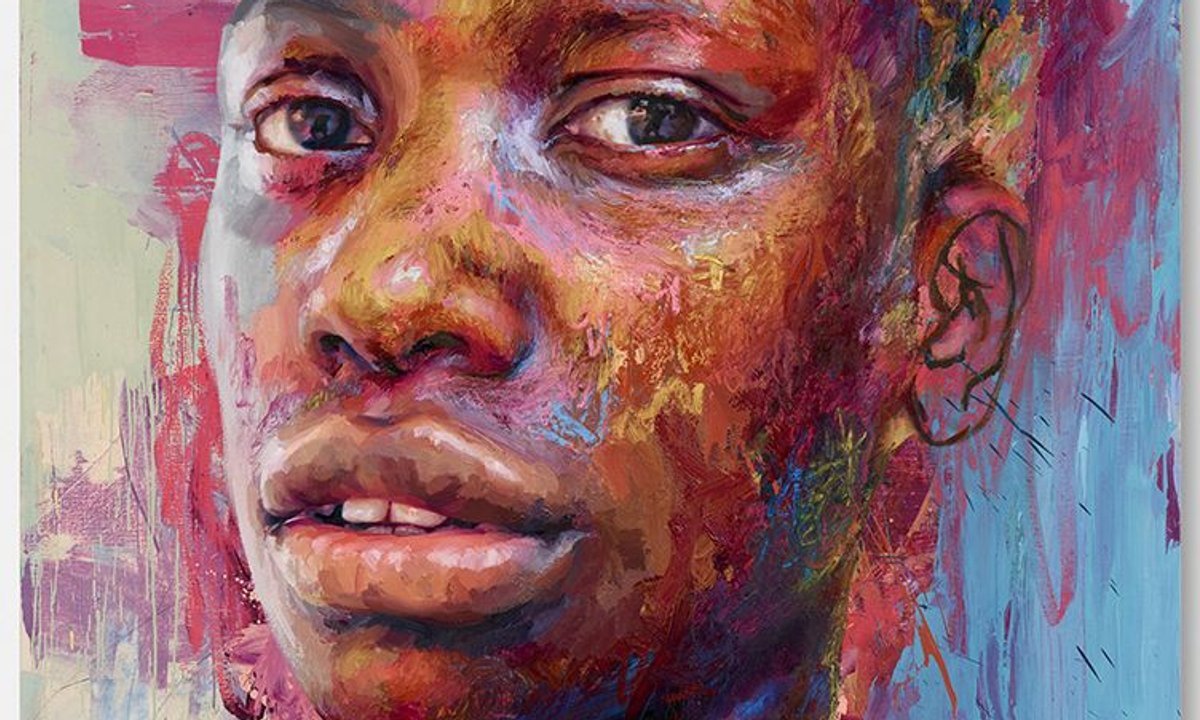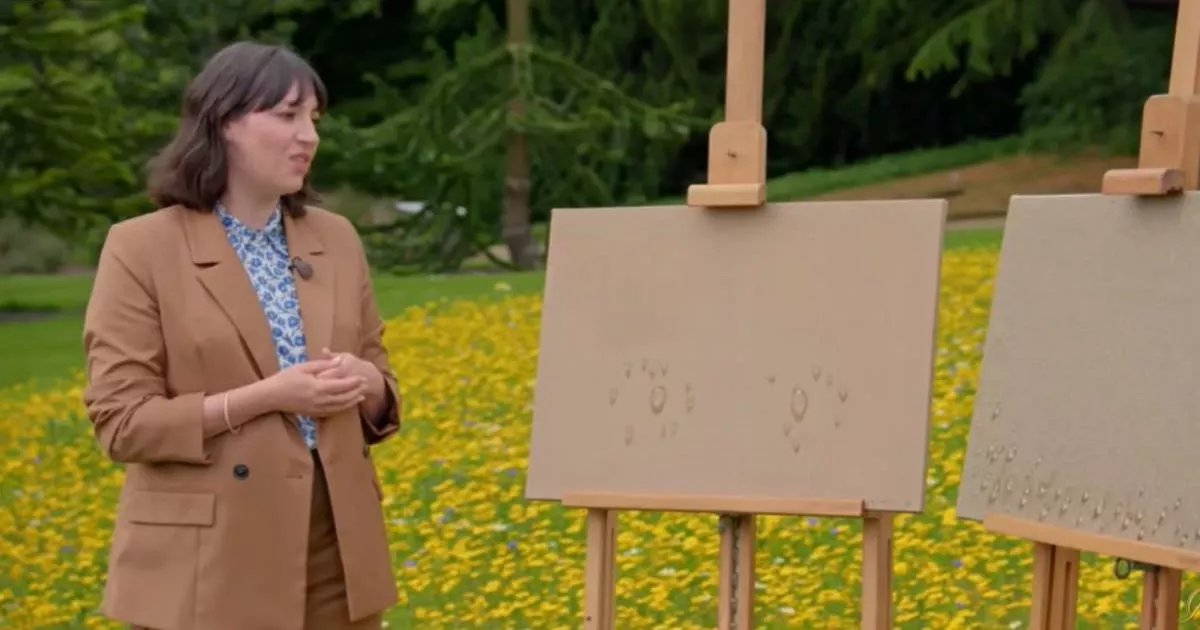The lobby of the U.S. headquarters of UBS, in Manhattan, is adorned this spring with dozens of original paintings by Lucian Freud, the English portraitist. But a few privileged visitors can get an invitation to the 14th floor, where an oak-paneled corridor leads to private rooms bedecked with still more art—from 20th-century giants like Cy Twombly and Roy Lichtenstein, and rising stars like Julie Mehretu and Jeffrey Gibson, among many others.
The Swiss bank presides over a global collection of more than 30,000 works and, along with an exclusive tier of other financial institutions, is a major force in the art world. The banks flex their influence at swank global fairs like Art Basel and Frieze, where they are sponsors and host exhibitions, and in local communities where they are patrons of up-and-coming artists and the galleries that display them.
These endeavors reflect a centuries-long tradition of banks as benefactors of the arts, but they also reflect a calculated business decision. At a time when financial institutions are betting on their wealth management practices as a source of growth, a high-profile presence in the art world can help attract and keep the “ultra-high-net-worth” clients who are their VIPs. And UBS can offer advice and guidance to those who are, or aspire to be, collectors.
The wealth services offered by UBS and others provide a window into the lives of the very affluent. And in the case of art, they show how banks can help the wealthy navigate a world with few rules—and where passion and emotion can trump the cold calculus of traditional financial transactions.
‘A famously opaque and unregulated place’
The Florentine clan known as the House of Medici, who took in a teenage artist named Michelangelo and had Leonardo da Vinci play the lute at their garden parties, were the first high-profile bankers to put their name on the art world. Junius Morgan, the founder of what is today JPMorgan Chase, continued that tradition in the New World as he amassed a collection that included Old Masters, da Vinci’s notebooks, and the jewelry of his Medici predecessors. (Much of this can be viewed by the public today at the splendid Morgan Library & Museum on Madison Avenue.)
The closest modern-day heir to Morgan and the Medicis may be the late Don Marron, founder of investment bank PaineWebber (which UBS acquired in 2000). Marron cut a larger-than-life figure in the New York art world. An avid Andy Warhol collector, he was both a leading banker and the president of MOMA’s board, and could often be found prowling the galleries of SoHo on any given Saturday during the 1980s.
The banking world today lacks an art-obsessed CEO—but it does have Mary Rozell, global head of the UBS art collection. Stylish in black with flowing white hair, Rozell is the “Anna Wintour of the New York art scene,” according to one art-world admirer, who added that “every gallery girl would die to work for her.”
Strolling into UBS’s 14th-floor showroom, Rozell pauses before a favorite new addition to the bank’s collection. It’s a painting that depicts a bright, whimsical scene of Black children frolicking with an inflatable swan in a swimming pool. She explains it’s part of a series by Brooklyn artist Derrick Adams, who uses his art to depict “Black joy” and whose work UBS has been acquiring as part of a broader initiative to make its collection more contemporary.
An art lawyer who previously taught classes in collecting as a director at the Sotheby’s Institute of Art, Rozell is tasked with exhibiting and acquiring works—and, on occasion, “deaccessioning,” the art world’s term for donating or selling a piece. Some of her colleagues will also play the role of emissary for UBS clients, lending their influence to bring them before the right dealers.
“It’s very much of an insider world, and there’s a lot of rules to play by that no one talks about,” Rozell explains. “You just can’t go into a gallery and buy art—there’s certain protocols and a certain stature that you need to have.”


Gaining access to the right galleries is just the first step for aspiring art buyers. They must also beware of unscrupulous dealers passing off one artist’s paintings for another, or of a carefully disguised water stain that dramatically reduces the value of the work. Of getting ripped off, in other words.
For select UBS clients, the bank will furnish the services of advisor Matthew Newton, a dapper figure who favors round glasses and brown blazers. Newton got his start in the art world after leaving rural Georgia, where he grew up, to become a painter in New York, and then a fixture in the city’s gallery scene. At UBS, Newton helps clients navigate an art world he describes as a “famously opaque and unregulated place.” In addition to steering them away from charlatans, Newton will also provide advice on how to build and take care of a growing art collection.
In most cases, Newton says, art buyers will purchase works until their home (or homes) are full and declare the process complete. Sometimes, though, they get the “collectors’ bug” and art becomes something closer to an obsession.
“Top-tier collectors tend to be a mix of entrepreneurs or very successful financial executives or hedge fund owners,” says Newton. “They relate to the world of successful artists. They’re decisive risk-takers who look at the world differently.”
Newton identified Steve Cohen, the mercurial founder of hedge fund Point72, as one of the country’s top private collectors. He also pointed to Walmart heiress Alice Walton, who has built an acclaimed museum in Bentonville, Ark., and to medical device tycoon Mitchell Rales, who, alongside his wife, Emily, has done the same outside Washington, D.C.
For the great collectors, art is very much a passion. But for the banks that help them build and care for their collections, it is very much a business—one that is very hard to value.
Priceless … or just expensive?
If you have $1 million, you can expect discounts on bank services and perhaps a personal holiday card from the branch manager. If you have $100 million, your bank will offer something else entirely: an on-call concierge service equipped with every sort of professional and fixer imaginable, designed for the ultra-high-net-worth set. This might include attorneys familiar with offshore real estate deals, psychologists who can reconcile you with your ungrateful grandchildren, or art advisors like Newton, who sits on UBS’s family office team.
These on-staff experts represent the top tier of the teams that make up most banks’ wealth management divisions—units that nearly every financial institution has described to shareholders on recent earnings calls as a future area of growth.
In the case of art-related wealth management services, it’s easy to state the business case—a wealthy client wants their banker to know about art—but it’s almost impossible to quantify. Tom Burroughes, who edits Family Wealth Report, describes the service as very niche, noting that only a handful of banks offer it. At the same time, an intrinsic quality of fine art is that people don’t want to sell, which means the total market is not very big. In 2023, global art transactions amounted to $65 billion, according to a March report by Art Basel and UBS. That’s a large number, but one that is tiny compared with other sectors—including banking, where JPMorgan Chase alone made nearly that amount in profits last year.
As for how much banks earn from their art-related services, it’s hard to say precisely. The value of these activities is not broken out in earnings reports, but is instead lumped into a broader category like wealth management. Even the banks’ famous collections are—perhaps appropriately for the shadowy art world—totally opaque from an accounting perspective. Though they are presumably worth billions of dollars, they aren’t broken out on the firms’ balance sheets or annual reports, and are instead chucked in alongside buildings and desks under “property, plant, and equipment.”
Still, in some cases, it is easy to see how banks’ art expertise can tie into their business services. Art collecting and trading overlaps with tax and philanthropy advisories, and serves as an anchor for a surprisingly robust lending practice. According to John Arena, head of art lending at Deutsche Bank, clients turn to him to convert artworks into collateral to finance everything from commercial real estate to investments to (of course) further art purchases.
Art collections are also a brisk source of business for banks’ estate planning units. That topic can be particularly fraught, as Rozell observes: “One of the things that collectors don’t like to think about is the long term, because in most cases the kids aren’t going to want [the art].”
Finally, staying immersed in the art world provides banks an intangible benefit in the form of an opportunity to retain well-heeled clients who are not going to be swayed by checking account promotions or free box seats to the Knicks.
“It’s an emotional thing,” says Burroughes, the editor. “That’s one reason banks get involved in art—to find out about their clients’ psychology.”
The future of corporate art
Banks are not the only companies that own art. Companies as diverse as Microsoft and Ford have assembled highly regarded collections, as have some white-shoe law firms. Most collections began with the simple need to hang something on the walls. But as companies grow in wealth and influence, the desire of many owners and CEOs is to express a distinct corporate personality and, ideally, to use art as a means to connect with their communities.
While all sorts of companies take part in the art world, the reality is that it’s banks that are at the forefront. This includes UBS and Deutsche Bank, but also the likes of JPMorgan Chase, Citi, Bank of America, and HSBC. A 2020 Bloomberg story even anointed the banks “the New Medici,” triggering a cry of dismay from a columnist for the site Artnet, who noted that banks’ expanding presence coincided with a decline in funding for public museums and galleries.
The concern is a valid one—after all, how valuable is a private art collection no one can see? But it is also one that banks can have a direct role in mitigating by staging public exhibitions, like the Lucian Freud on display in the UBS lobby, and by donating and lending works to public museums.
And at a time of ongoing anxiety over a return to the office and finding a social life outside our phones, the example of famous finance CEO and art patron Don Marron offers inspiration. As Rozell recalls, the 1980s were an era of watercooler chatter when the physical aspects of the office mattered a lot—and art was an important part of that.
“Especially before the internet, everything was about the physical office space,” she says. “In Don Marron’s case, he liked to use art to provoke—and I like it, too.”
Indeed, UBS’s collection can catalyze the kinds of chats that build deeper relationships with clients. “People will come into my office and say, ‘I really don’t understand that piece in the lobby,’” Rozell says. “And it’s then you have a great conversation.”
A version of this article appears in the April/May 2024 issue of Fortune with the headline, “The art of banking.”
This story was originally featured on Fortune.com






